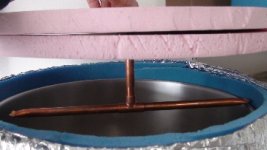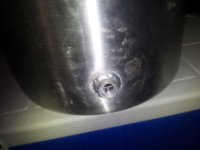Twangthang
Apprentice
- Joined
- Dec 25, 2011
- Messages
- 6
- Reaction score
- 0
Hi all.
I am using a 52 quart cooler I converted to a MLT... I am having some problems holding my temp.
Is there just too much head space to hold my temp? I have been pre-heating the cooler with hot water and insulating with blankets and kept the lid down the entire time but my last mash I went from 152 to 146 in the hour.
I missed my target by a mile and I am pretty sure this was a major factor.
Is there a recommended size to stay within?
Thanks
Jim
I am using a 52 quart cooler I converted to a MLT... I am having some problems holding my temp.
Is there just too much head space to hold my temp? I have been pre-heating the cooler with hot water and insulating with blankets and kept the lid down the entire time but my last mash I went from 152 to 146 in the hour.
I missed my target by a mile and I am pretty sure this was a major factor.
Is there a recommended size to stay within?
Thanks
Jim






